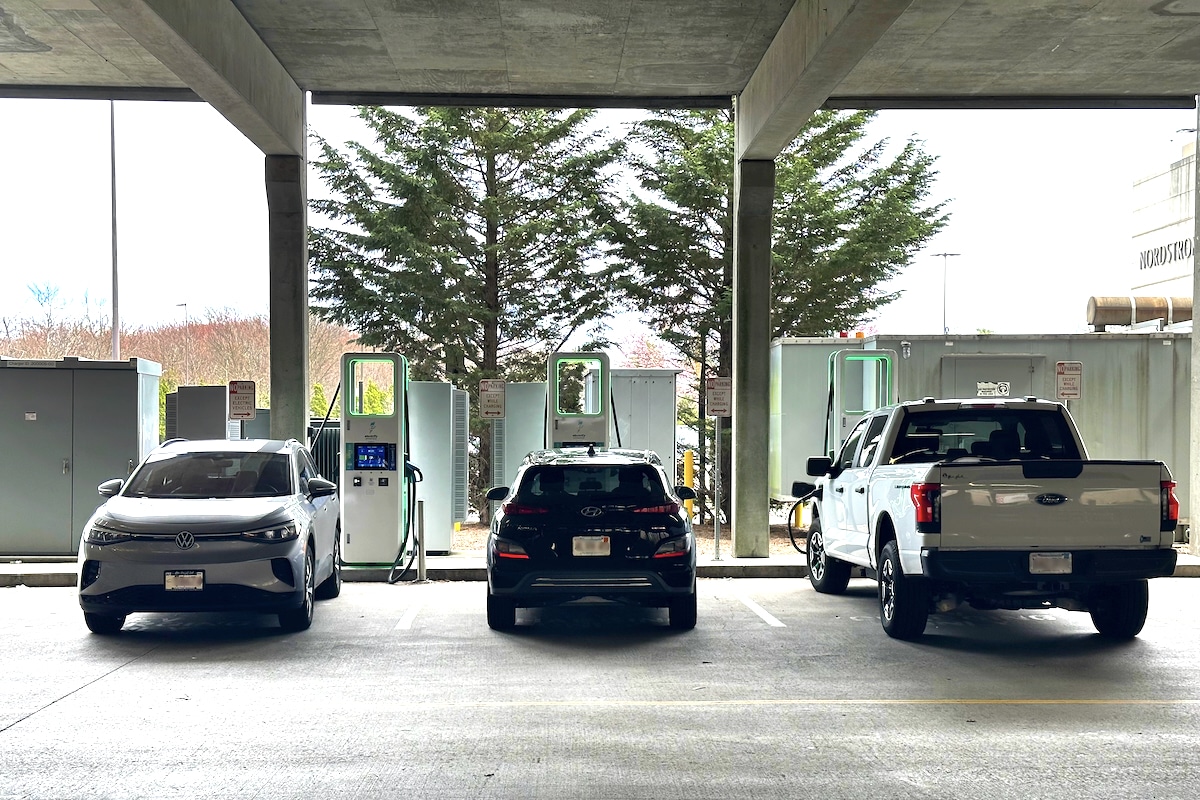Ecowatch
More Than 1 in 5 Cars Sold Globally This Year Will Be Electric: IEA Report

Electric vehicles at Electricity America EV charging station in a parking garage at a shopping mall in Boston, Massachusetts on April 14, 2024. Lindsey Nicholson / UCG / Universal Images Group via Getty Images

Why you can trust us
Founded in 2005 as an Ohio-based environmental newspaper, EcoWatch is a digital platform dedicated to publishing quality, science-based content on environmental issues, causes, and solutions.
In its new Global EV Outlook 2024, the International Energy Agency (IEA) said electric vehicle (EV) sales will reach 17 million this year — up from 14 million in 2023.
In 2024, EVs are projected to make up roughly one out of nine cars sold in the United States, one in four in Europe and 45 percent of total car sales in China, an IEA press release said.
“Electric cars continue to make progress towards becoming a mass-market product in a larger number of countries,” the report said. “Tight margins, volatile battery metal prices, high inflation, and the phase-out of purchase incentives in some countries have sparked concerns about the industry’s pace of growth, but global sales data remain strong.”
More than one-fifth of cars sold globally in 2024 are predicted to be electric, with growing demand set to substantially reduce oil consumption used for road transportation over the coming decade, the press release said.
The pace of EV sales means road transportation’s oil demand is expected to peak around 2025, according to the IEA report, as Reuters reported.
The report added that around six million barrels of oil per day would be cut from oil demand by 2030, with an 11 million barrel reduction by 2035 if countries meet their stated climate and energy policies.
By 2030, EVs are projected to make up nearly one in five cars on the roads in the U.S. and European Union and one in three in China.
In the first quarter of this year, EV sales went up approximately 25 percent compared to 2023, which was similar to the same period in 2022, but from a wider base. Global EV sales from January through March 2024 were roughly equal to all EV sales in 2020.
Last year, nearly two-thirds of EVs sold in China were less expensive than their internal combustion engine (ICE) equivalents.
“Electric cars are generally getting cheaper as battery prices drop, competition intensifies, and carmakers achieve economies of scale,” the report said. “In most cases, however, they remain on average more expensive than ICE equivalents.”
The IEA added that the need for more charging infrastructure to meet rising demand would present an important challenge, with a need for charging networks to increase six-fold by 2035.
“Ensuring that the availability of public charging keeps pace with electric vehicle sales is crucial for continued growth, according to the report. The number of public charging points installed globally was up 40% in 2023 relative to 2022, and growth for fast chargers outpaced that of slower ones,” the press release said. “[P]olicy support and careful planning are essential to make sure greater demand for electricity from charging does not overstretch electricity grids.”
Fatih Birol, IEA’s executive director, emphasized that, rather than slowing down, the EV market was still growing
“The continued momentum behind electric cars is clear in our data, although it is stronger in some markets than others,” Birol said in the press release. “Rather than tapering off, the global EV revolution appears to be gearing up for a new phase of growth. The wave of investment in battery manufacturing suggests the EV supply chain is advancing to meet automakers’ ambitious plans for expansion.”
Subscribe to get exclusive updates in our daily newsletter!
By signing up, you agree to the Terms of Use and Privacy Policy & to receive electronic communications from EcoWatch Media Group, which may include marketing promotions, advertisements and sponsored content.
Source
Disclaimer: No copyright infringement intended. All rights and credits reserved to respective owner(s).












